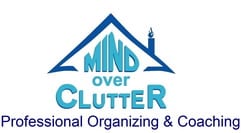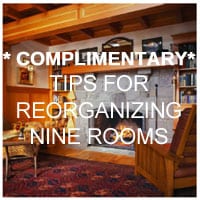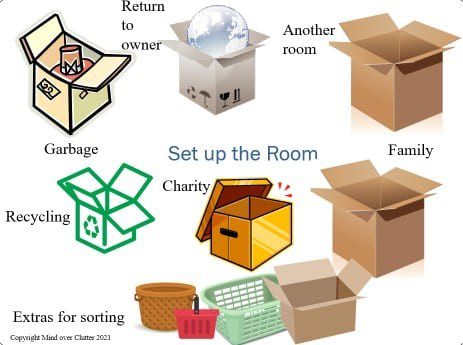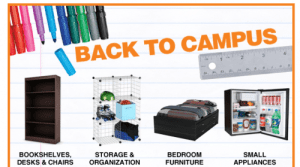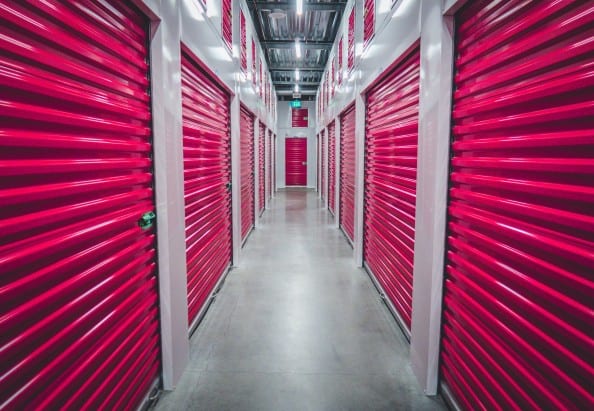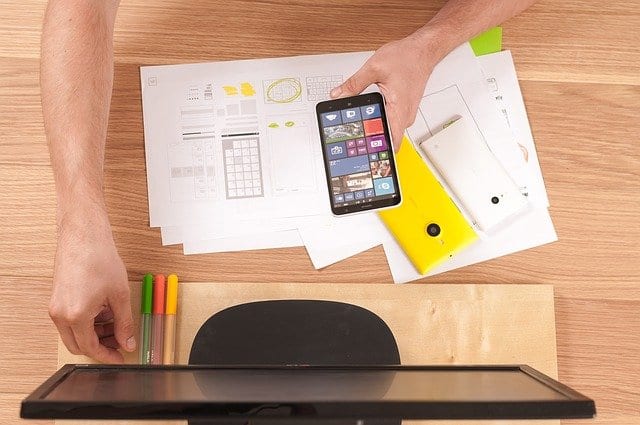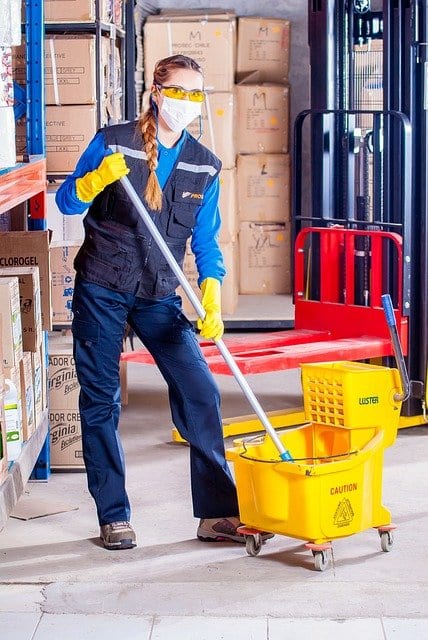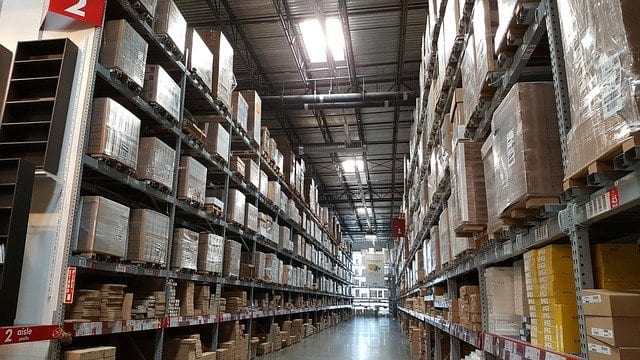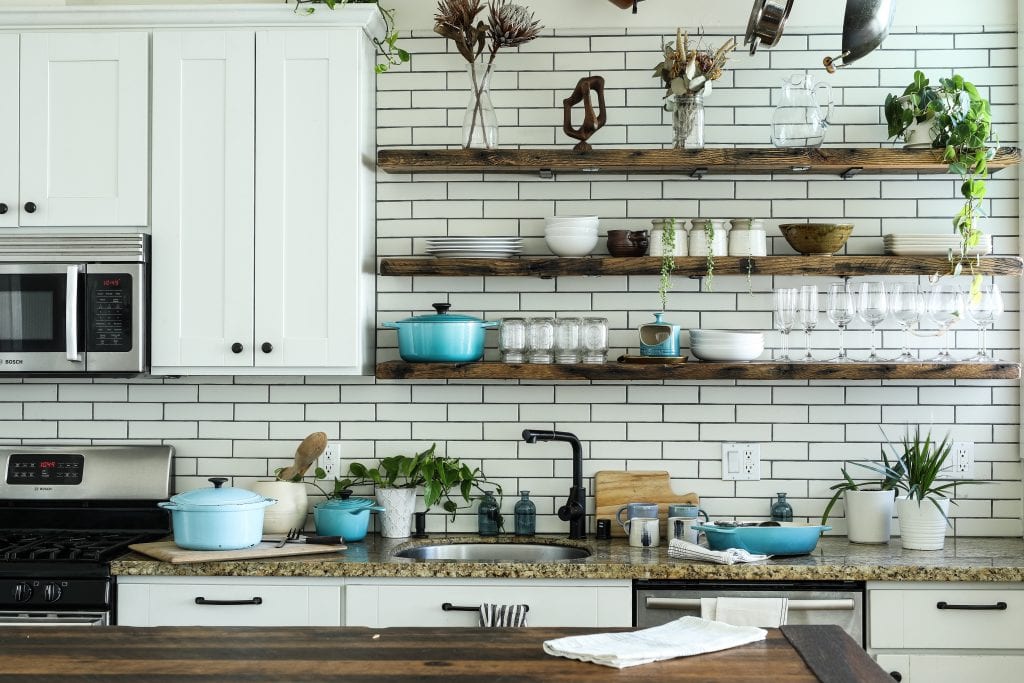Latest Blog Posts
This article was first published by JR Moving Services
Just because something brought you joy in the past doesn’t mean you should carry it forever. The possessions you keep should represent the person you are trying to become, not the person you were. Keep this in mind when you start your decluttering journey. As you start to let go of things it will become easier and easier. Here are steps to help you on your path to finding your treasures.
Planning the space
Decide what the goal is for the room. Is it to have a:
- Beautiful compact space
- Functional workshop
- Sense of freedom and control
- the Joy of financially exchanging stuff for new experiences and pleasures.
- Clear out a parent’s home
- Make things easier for the next generation
- Streamline your lifestyle
Make a floor plan
Decide what you want the room to look like and be used for. Draw a floor plan and make a list of activities that happen in that space. It will help you to know what to keep.
Decision criteria
Set up some questions to help you with your decision making. Here are some examples:
- How many of these do I have? How many is enough?
- Does the item fit in with my values?
- Is this item current?
- Is this item really valuable?
- Will owning this help to resolve my clutter?
- What is the worst thing that can happen if I don’t have it?
- If I need it, can I borrow it from somewhere?
- Does it bring me joy?
- Do you need it?
How much is enough?
Look around the room and decide what percentage of stuff you need to give away so everything will fit into the room. 25% 50% 75%?
If you don’t schedule it, it won’t get done.
Schedule the time and do it when you are not rushed. Do one area, room, box or even corner of a room depending on how much stuff you have to go through and your deadline.
Prepare the room for working.
You will need a series of boxes, bins, bags or containers for garbage, recycling, donations, items to go to other rooms, and items to return to people.
5 Methods for decluttering the room
I’m going to go through a number of ways to sort through your items and you can decide what method works best for you. At first, decluttering is easy because you find items that you know you don’t want and just haven’t given them away yet. Then it becomes more challenging. You must chip away at identifying which items are true treasures versus those you feel guilty about giving away. Remember to reduce by the percentage you choose in your planning.
1. Have a box
The simplest way to start is to keep a box in your closet and whenever you find something you don’t need put it into the box and you can start decluttering right away.
2. Skimming
- Go to a closet/cupboard and select the best items in each that category.
- Most cupboards/closets will have more than one category.
- For example, in a kitchen, the cupboard might have baking dishes, casserole dishes, muffin tins, and loaf pans. Pick the best 1 or 2 of each of these 4 categories and donate the rest.
- Continue to open each cupboard and drawer skimming the contents and selecting 1 or 2 items from each category.
3. Sort then declutter
- Go clockwise around the room sorting items into groups by function
- Do the surfaces first and then the drawers and cupboards next
- When you are done, the garbage and recycling will be collected and removed from the room
- All the items in the room will be in groups
- Each room will have different categories/groups of items. Here are some examples, books, electronics, tools, dishes, home decor, games, clothing, photos etc
Look at one category/group and apply the questions and percentage you determined in the planning stage. Start removing items you don’t need and donate them.
If that method doesn’t work for you and you are keeping everything, try a different method.
4. Grouping
Keep the Best of the Best. Instead of thinking about giving things away, it might be easier to think about keeping the best.
- After you have sorted the room make sure you are keeping the best one. You need to see all of the items in one group together and keep only as many as you need or the percentage you set in the planning stage, keep the best ones.
5. Triage
- Gather all your items from one category
- Pick up the first three and remove the one you like the least.
- Pick up 3 more and remove one again
- After you have gone through the category/group you will have decluttered by 1/3
If you are sentimental
- Try taking a picture of the items so you have the memory and let go of the item.
- Find a good home for the things you are letting go of, they are still useful just not to you anymore.
- “Shrink it”, only keep one item from a collection instead of the entire collection, you will still have the memory
- Ask yourself, what would be best, having a number of boxes with large quantities of unsorted keepsakes or a carefully assembled box of very precious treasures?
Mindset
Decluttering is about having a mindset of letting go and having less. Once you experience the joy of being unburdened from cleaning, organizing, buying, and repairing stuff you don’t need, want, use or like you’ll wonder why you didn’t start sooner. Enjoy the journey.
Moving Companies rely on businesses like Mind Over Clutter. If you are in the rightsizing process check out our partners at Mind over Clutter. They service St. Catharines and The Niagara Region and can give you some great insight and help you through this process!
 Julie Stobbe is a Trained Professional Organizer and Lifestyle Organizing Coach who brings happiness to homes and organization to offices, virtually over Zoom. She has been working with clients since 2006 to provide customized organizing solutions to suit their individual needs and situation. She guides and supports you to manage your time, and projects and reach your goals. If you’re in a difficult transition Julie can coach you to break-free of emotional clutter constraining you from living life on your terms. Online courses are available to help instruct, coach and support your organizing projects. Get started by downloading Tips for Reorganizing 9 Rooms.
Julie Stobbe is a Trained Professional Organizer and Lifestyle Organizing Coach who brings happiness to homes and organization to offices, virtually over Zoom. She has been working with clients since 2006 to provide customized organizing solutions to suit their individual needs and situation. She guides and supports you to manage your time, and projects and reach your goals. If you’re in a difficult transition Julie can coach you to break-free of emotional clutter constraining you from living life on your terms. Online courses are available to help instruct, coach and support your organizing projects. Get started by downloading Tips for Reorganizing 9 Rooms.
Contact her at julie@mindoverclutter.ca
Click here to learn more about her online course Create an Organized Home.
Twitter – Facebook – Facebook group Organizing Mind and Space
Reading time – 5 minutes
It is that time of year when your young adult moves back home or the summer. You might think of them as your kid. They might think of themselves as an adult now that they have been living on their own for a year. Each of you has changed over the year and so has your relationship. Here are some tips on avoiding the conflict that might happen.
Each party in this living situation has different expectations so make a contract with each other so it is clear what the expectations are. Click To TweetExpectations
It is a big change in lifestyle when students move home for the summer, for the students and the parents. Sometimes students think
- It will be just like before I left
- I will have the same responsibilities as I did living away from home
- I am on vacation for 4 months
- and so on…
Sometimes parents think
- they have lived on their own so they should have no problem contributing around the home without being asked
- now I have someone to help with all the work
- things have changed and we do things differently now
- and so on…
Each party in this living situation has different expectations so make a contract with each other so it is clear what the expectations are. My daughter presented me with some rules when she moved back home for a few months. She asked me to look at them and see if they were suitable and to add any rules. It made things very easy and simple because there were fewer misunderstandings.
Your contract/ agreement might cover the following ideas.
Car
- Who pays for gas?
- When can they use it?
- Do they have to ask to use the car or can they just take it?
Food/ Groceries
- Who buys the groceries?
- Who pays for the groceries?
- Do you buy everything on the list?
- Do you buy only the things you need from the list when you go shopping?
Cooking
- Who cooks?
- Who plans the meals?
- Do you cook for everyone or only yourself?
Kitchen
- Who cleans up the kitchen?
- What needs to be cleaned, floors counters, stove, sink?
- Who does the dishes?
- Who empties the dishwasher?
Schedule
- Do you record your activities in a specific place, electronic or paper?
- Do you need to tell where you are going and when you will be back?
- Are there any activities you are expected to attend?
Your young adult may feel like you are trying to “keep tabs” on their activities. They have not had curfews and anyone to report to in a year. Explain that you want to know when to expect them back for safety reasons. If they don’t return when they are expected then it is time to start worrying and start looking for them.
Laundry
- Who is responsible for laundry?
- May they use the supplies at home or do they purchase their own supplies?
Cleaning
- Who does the cleaning, is it a shared task?
This checklist of ideas makes it seem like working out an agreement will be a lot of work. The agreement only needs to cover areas that cause conflict, tension or have changed since the student last lived with you.
Our agreement looked like this:
Food
- Buy groceries: give Mom the bill, buy everything on the list
- Weekday meals: First one home cooks, Mom will try to plan the meals for the week
Car
- Mom will pay for gas
Kitchen:
- Clean and wipe counter and island and stove
- No dishes in the sink or on the counter, put them in the dishwasher before going to bed
Schedule:
- Record your evening activities and times when you won’t be home for supper on the calendar
- Politely and conversational let us know where you are going and when you plan on returning. This is for safety reasons, if you don’t return we need to know where and when to start looking for you
2 weeks ago I wrote about Moving a Student Back Home
Tell me what items you put on your contract in the comments below.
 Julie Stobbe is a Trained Professional Organizer and Lifestyle Organizing Coach who brings happiness to homes and organization to offices, in person and virtually. She has been working with clients since 2006 to provide customized organizing solutions to suit their individual needs and situation. She uses her love of physical activity to reduce clutter, in your home and office. She guides and supports you to manage your time. If you’re in a difficult transition Julie can coach you to break-free of emotional clutter constraining you from living life on your terms. Online courses are available to help instruct, coach and support your organizing projects. Get started by downloading Tips for Reorganizing 9 Rooms.
Julie Stobbe is a Trained Professional Organizer and Lifestyle Organizing Coach who brings happiness to homes and organization to offices, in person and virtually. She has been working with clients since 2006 to provide customized organizing solutions to suit their individual needs and situation. She uses her love of physical activity to reduce clutter, in your home and office. She guides and supports you to manage your time. If you’re in a difficult transition Julie can coach you to break-free of emotional clutter constraining you from living life on your terms. Online courses are available to help instruct, coach and support your organizing projects. Get started by downloading Tips for Reorganizing 9 Rooms.
Contact her at julie@mindoverclutter.ca
Click here to learn more about her online course Create an Organized Home.
Twitter – Facebook – Facebook group Organizing Mind and Space
Reading Time – 3 minutes
It is that time of year when college and university students are moving back home for 4 months. If their things are packed in an organized way it will take some of the work out of moving back to school in September.
1. Buy bins that stack inside each other when they are not in use.
Stacking bins are easy to store. Most of us like to cut costs and use boxes to move students. Since moving is an ongoing process for the next number of years buy some bins. They will stack nicely in a truck/van and in a closet or storage area at home. They will only need to be purchased once whereas boxes are usually recycled and you need to find more every time. Bins are waterproof.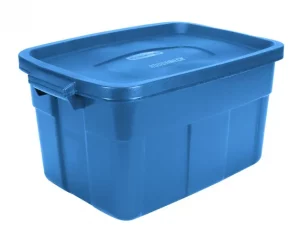

2. Before the student begins packing, make a list of items they need at home.
Make sure the items that are needed at home are packed together in a bin. Label those bins, bedroom. Other items that they need only for school can be left in the bins to be moved back to school in September. Label them basement, closet where ever they will be kept. They may need a bin or two labelled laundry. Some items may need to be washed before they are stored away for the summer, bedding, blankets, winter coats etc. This makes unloading quick and easy. If your student is moving across the country, arrange to have their school stuff stored with a friend or a storage unit. Save the shipping fees. Keep the list they made to move home to use in September. When it is time to go back to school look at the list and repack the items that were used during the summer.When you're packing up at college or university, pack the things you need at home separately in one bin and everything else you'll bring back to school in other bins. Click To Tweet
3. At home, designate an area where the bins will be stored over the summer.
Clean out the designated area before your student arrives home. If everything is kept close together or in a limited number of areas when September arrives, it is easy to know where everything is.
A little planning can make the move quick and easy. Next, I will talk about how to make the living arrangement at home easy and enjoyable.
What have you done to make moving your student back home easier? Share a comment below.



Contact her at julie@mindoverclutter.ca
Click here to learn more about her online course Create an Organized Home.
Twitter – Facebook – Facebook group Organizing Mind and Space
Every year you set yourself resolutions, some you keep some you might not but if there is one resolution that should be attainable for everyone is the January de-clutter. In fact, there really is no better time to sort through, organize, and de-clutter than the post-Christmas holidays. You and your family have no doubt accumulated an awful lot of new stuff and you need to make room for it. Don’t let your new belongings sit on top of the old ones, use this time to donate the stuff you no longer use or need and make room for your appreciatively received new goodies.
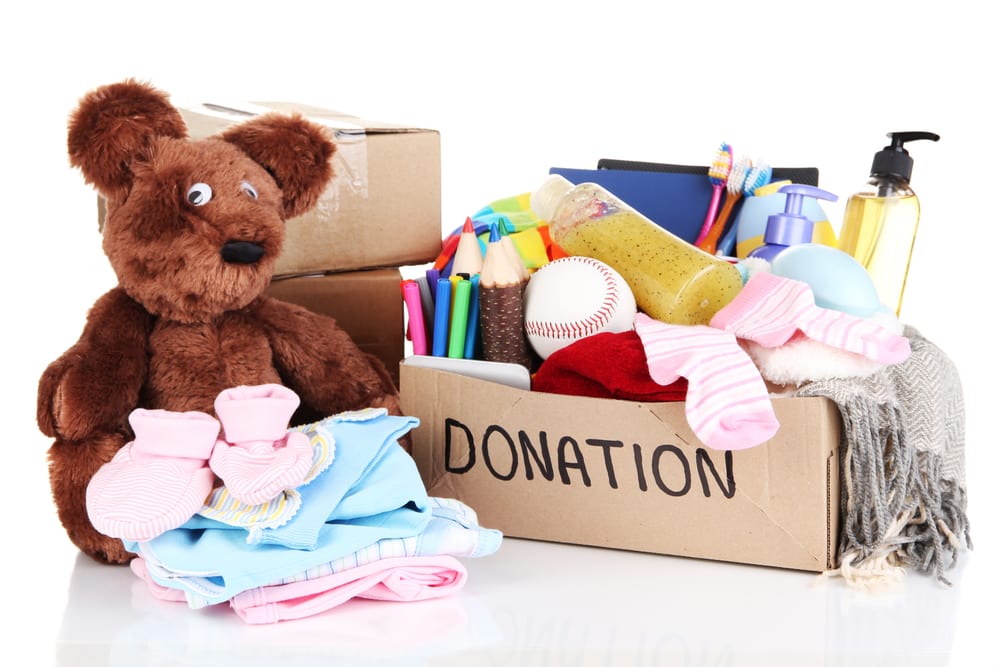
How to start your New Year declutter
To successfully undertake a declutter you need to be organized with a plan and agenda, and you need to stick to it. Here are some ways to help you organize your decluttering.
- List your areas for decluttering; do not just wander aimlessly around your house opening random cupboard doors looking for inspiration. List where you want to declutter and start with the easiest area first or the area that bothers you the most.
- Have a deadline; decide on a time that you want each area decluttered by and give yourself sufficient time to do the work. It could be an hour, 10 minutes a day, or a full afternoon dedicated to one space. Whatever works for you.
- Develop a system; when it comes to going through all of your stuff put in place a system of what you are going to do with your items. A good place to start is by having four stations, donate/recycle, sell, trash, keep. Everything should go into one of these piles but your keep pile should be dramatically reduced. Remember if you haven’t used it in a year – donate it.
- Make sure everything has a place; if you are keeping it make sure it has a place to live and it stays there without causing mess or clutter. If it doesn’t have a place then make a place that is easily accessible and close to where you use it or don’t keep it.
Benefits of decluttering
If you still are not tempted to declutter, consider some of these benefits to help persuade you.
- Reduce stress and anxiety. Mess, clutter, and chaos in your home can have a negative impact on your stress and comfort levels. It can cause a sensory overload, you might feel embarrassed or stressed at the prospect of not knowing where things are.
- Easier to clean and tidy. With so much less stuff in the way, it will be easier to keep your home in order and keep things clean and tidy, which will inevitably make life easier when hosting and entertaining.
- Positive impact on selling your home. Having a clean, tidy, decluttered home will make selling your home easier. If listing your home is something you are considering doing a declutter is essential as all top realtors such as https://jenjewell.ca/ will conclude.
- Help to remove allergens. Dust, pet hair, and pollen can gather in all kinds of places and there is no better place than on tops of items sitting around taking up space and gathering dust. Getting rid of clutter should help to improve the airflow of your home and remove gathering dust and allergens.
If you need help with decluttering and organizing your home, purchase my online course, Create an organized home.


Contact her at julie@mindoverclutter.ca
Click here to learn more about her online course Create an Organized Home.
Twitter – Facebook – Facebook group Organizing Mind and Space
This week my guest blogger is Sophia Perry from Arizona Moving Professionals
There comes a point when any household or a business needs additional storage space. Many people use it during a move or for decluttering and organizing purposes. While storage units are often a necessity when running a business, in recent times, they are becoming increasingly popular for people who recognize the importance of having a tidy living space. Hoarding items can lead to feeling snowed under and consequently anxious and frustrated. Hence, storage units are a practical solution. However, if you intend to use storage and free up some work or living space, be aware that, without a mindful approach, you’re risking turning your unit into the ‘land of lost and found’. Therefore, you need a good strategy for organizing your storage unit for frequent access to optimize the experience of your stressless, clutter-free lifestyle.
It starts with setting your priorities
Storage units are a multifaceted solution for storing a variety of items. Apart from helping with organizing a business inventory or a loved one’s belongings and heirlooms, people also use storage units to keep their cars and vehicles during the off-season, such as boats or motorcycles. If you’re moving, planning a home remodelling, or have a knack for interior design and decorating, a storage space is a guaranteed way to simplify your life. First and foremost, it’s important to consider the intent and purpose of the unit you’re using or planning to use. Click To Tweet
Create a mindful picture, and even better, an inventory list, of what type of items you plan to store. This will help you adopt a more organized approach towards your storage solution from the get-go. Otherwise, you’ll find yourself piling up unnecessary odds and ends and just spreading the enchanted hoarding circle outside your home or office. A storage unit is a fantastic way to declutter and harmonize your space or offset the stress of a move, as long as you prioritize keeping your items organized and easily accessible.
To organize your storage unit with success, create a master inventory list and set priorities regarding the importance of your items.
Plan the layout of the unit
The idea of vast space available to be used for storing your items might be tempting. However, you’ll need to consider what goes where to ensure you’re organizing your storage unit for untroubled access to your items. With this approach, you might realize that you have a lot of clutter to let go of and will surely provide you with a perspective on your priorities. All it takes is some pragmatic consideration of how quickly and how often you will need something.
Items that you use less frequently, or hardly ever, should go at the back of the storage. For a smooth transition, let movers load these last in the truck, as they will be unloaded first and consequently dropped off at the back of the storage unit. This is a good chance to give these items a second thought. Try to determine why you are keeping them and what do you need them for. Not only will this help you to arrange your unit for efficient access, but it will also give you a clear picture of the scope of your possessions.
Have a practical idea about the layout of your storage unit to ensure quick and easy access to your items.
Decluttering a storage unit
If you’ve been using a storage unit for a while, you know how fast and easy it fills up. However, with an effective decluttering and organizing method, you can have it sorted for smooth access to your storage unit. Without a doubt, decluttering is the toughest task, but it’s also rewarding in so many ways. A functionally organized, clutter-free storage area will enable you to find anything you need with ease, and you’ll save time and enjoy peace of mind. You can ask friends to lend you a helping hand or hire a professional junk removal company. Depending on the size of your storage unit inventory, you should plan accordingly on how much time you will need to get the job done. You can book a full day in your calendar to dedicate to decluttering your unit. Challenge yourself, commit and stay on task. The reward is a feeling of ease and relief once you see it through, and ultimately, effortless access to your needed items.
Decluttering a depot is a daunting task, so asking friends or hiring professional services can be of great help.
Find creative ways to sort out items
Although decluttering can be a challenging task, with a good plan and a mindful approach, everything is achievable. Give yourself a little pep talk on the importance of organizing your space for some healthy motivation. Since the purpose of a storage unit is to keep your items, their safety and easy access to them can impact your mood. Hoarding or not even knowing what things you possess can lead you to feel overburdened. Use your master inventory list to determine what is relevant for keeping and what’s worth parting from. Divide your excess items into groups, and decide what to toss, donate or sell. For a smooth and efficient decluttering project, take out the items you intend to dispose of first. Subsequently, it’ll be much easier to deal with things you plan to sell or donate. With that being done, you’re one step away from fruitfully organizing your storage unit for frequent access.
Divide your items into categories to efficiently declutter and organize your storage unit.
A neatly organized storage unit
If you run a business, frequent access to your storage unit is a given. As a matter of fact, even if you use it to store items other than office inventory, an organized storage space will help you feel more in control of your life. Once you’ve carried out the decluttering project, you may have noticed how relaxed you feel. With no junk to obstruct your way, you’ll be able to organize your storage unit neatly and have everything you need on hand, without having to waste precious time and energy searching through the mounds. In your recently created clean storage space, stack and group your boxes from the least needed at the back to the ones you need more frequently accessed toward the unit’s front entrance. Allow some space in between rows of boxes to create aisles for easy navigation. Last but not least, label the boxes according to their contents, and make sure the tags are facing outward and are easy to read. This is the most efficient method for organizing your storage unit for frequent access, which will make the chaotic mess and clutter, and the anxiety that comes along with it, a thing of the past.
Share your tips for keeping a storage unit organized.


Contact her at julie@mindoverclutter.ca
Twitter – Facebook – Facebook group Organizing Mind and Space
Click here to learn more about working with a Professional Organizer.
Reading time – 5 minutes
Here are 11 Things Most People Forget to Do
Thanks to my guest blogger Jeff Anttila of Redfin for sharing his tips on getting your house ready for the real estate market.
You’ve started on your lists of small repairs, you’ve contacted a real estate agent, and now you’re in the final steps of getting ready to sell your house. But before you put your home up for sale, and certainly before having your first open house, here are 11 things to consider that most home sellers forget to think about and could cost you a sale.
1. Declutter and Organize Your Closets and Cabinets
Sure, you went through your entire house and reduced the clutter in each room, organized your desk and other surfaces, and arranged your collection of antique ceramic kitty figurines to be facing perpendicular to the window. However, did you tackle your closets and cabinets? One thing you should definitely expect during an open house or individual home tours is that potential home buyers will be looking in your closets, kitchen drawers and cabinets. Will your walk-in closet fit all of his shoes and her summer dresses? Is there enough storage space in your kitchen for their cookware, bakeware, and all the kitchen gadgets that they seem to collect each year? These are all questions home buyers will be asking themselves as they walk through your home.
Of course, you as a home seller will have no idea what the needs are of a potential home buyer, but you can definitely showcase what your house has to offer in terms of storage. Start by decluttering your closets, cabinets, and drawers, and then keeping only enough belongings in each to really show off the potential that space has to offer. Think of it as an extension of staging your home, but for your storage areas.
2. Clean Stains and Eliminate Odors
We should all consider small stains, marks, and other imperfections as badges of honor for a house that has been lived in for years. Nonetheless, these slight bumps and bruises your home has encountered over time will stick out to potential home buyers, so tackle them head-on. Begin by trying to put yourself in the shoes of a potential home buyer and look at your house objectively. Start by going outside and then re-entering your house as if you didn’t actually own it but were an interested home buyer looking at it for the first time. What do you see? Walk through every room and take note of all the imperfections you notice. You might surprise yourself with how quickly your list grows. You can then add them to your list of repairs so you can make your house truly at its best before your first open house. Also, if you have pets there is a strong possibility that your home has an odor that you can no longer smell. Deep cleaning your house is a sure fire way to help eliminate these odors, but also think about using an odor eliminating spray every day for about a week before your first open house. You can also place plugin room fresheners that offer a great crisp smell, like cucumber, to help infuse a sense of cleanliness throughout your house.
3. Replace Light Bulbs
Walk through each room in your house and look at every light bulb to see if it’s working. As homeowners, we sometimes forget to immediately replace a light bulb when it goes out. You want your house to be at its brightest when new home buyers are touring your home and replacing old burnt out light bulbs is one of the easiest ways to do it. Also, don’t forget to walk around the outside of your house to make sure all the lights on your home’s exterior are working as well. Depending on the time of year, your open house or home tours could happen when the sun is going down or when it’s already dark. So be sure to make your house shine inside and out!
Pro tip: Make sure all your light bulbs are the same color temperature inside your house as well as outside. A soft-white light LED bulb can create a bright but welcoming environment for new home buyers.
4. Think About the Small Details: Plants, Mirrors, Rugs
Consider each room’s individual characteristics, so you can really showcase the potential every room in your house can offer. Here are a few ideas to keep in mind while you start prepping every space for an exceptional open house experience.
Add a little green to your spaces
Nothing breathes life into a room more than a little greenery. A potted tree can work wonders in a living room, but for smaller areas think of smaller plants such as a small potted herb garden in the kitchen or a miniature cactus on the mantel.
Open up even the smallest rooms
Mirrors can make small spaces seem large because they create the illusion of depth. Mirrors also work wonders in darker rooms as they reflect light deep into areas of a room that may not receive an abundance of natural light.
Add character to an otherwise unimpressive space
While staging your home, think about adding character to various spaces with rugs. However, keep in mind that you want to use rugs to enhance a space, not be the focal point of it. Also, if you have a strange space that you never really figured out a good use for, a rug could at least offer a little personality while leaving the space and its potential to the imaginations of home buyers.
5. Enhance Your Outdoor Space
You’re probably already aware that enhancing your curb appeal is one of the most impactful things you can do to create a great first impression. However, you don’t want to forget about your other outdoor areas, such as your front porch or entrance, your back entrance, your side yard, and your backyard. You want to enhance your outdoor spaces around the house so potential buyers can see themselves living as much outside your house as inside. Simple enhancements like placing potted plants at your front entrance or adding fresh beauty bark around the base of your hedges and trees can go a long way. If you don’t already have a designated outdoor space for entertaining, think about building a DIY fire pit and adding four Adirondack chairs to create the idea of outdoor fun. Ultimately, your outdoor space can be just as important of a space as what your home has to offer on the inside.
6. Get Professional (Aerial) Photography
By now your research has probably shown you that homes with professional photos sell for more and spend less time on the market on average. What you may not have considered is adding aerial photography to your listing photos. Aerial photography can show off your entire property, a scenic view, and the surrounding area. If you have a lot of property, an aerial shot can easily put into perspective the full scope of all your land has to offer to potential home buyers. Furthermore, aerial photography has come a long way thanks to the rapid development of drone technology, resulting in reasonable pricing that is accessible for many homeowners today. For higher-end listings, drones can even capture video of your property, helping it stand out among the hundreds of other homes for sale.
7. Don’t Forget About Your Gutters
Imagine that you’re having your first open house and despite the rain, foot traffic has been steadily increasing all morning. Your house looks immaculate, like one of those homes off of an HGTV show, and your real estate agent has been messaging you updates every hour about how great it’s going. But then the unexpected happens. A small stream of water starts coming down right in front of your large bay window in the living room. The stream is outside the house, but your would-be buyers watch on as it grows into a miniature waterfall. Red flags go up for the home buyers touring your house as the foot traffic thins and then disappears altogether. What they didn’t see was that the spillage was the result of a clogged gutter, nothing more, causing water to spill over in a very inopportune place and at the worst time. Depending on where you live, you may not see as much rain in locations like Phoenix, AZ, but in many locations where rainfall is a common occurrence, such as Seattle, WA, this situation is more likely to happen. If you don’t have time to clean your gutters yourself—because you have a house to sell and a million other little things to do—there are professional services that can clean your gutters for you so this little oversight doesn’t drown out your hopes of selling your home quickly.
8. Paint Your Baseboards and Crown Moulding
It’s pretty common knowledge that you should paint the interior of your home a neutral colour to appeal to more buyers. Home buyers want to imagine themselves and their stuff in your space, so your red accent wall will need to be painted over with a more neutral hue. But what a lot of home sellers forget to do is pay attention to their baseboards and crown moulding. Where crown moulding may just need some cleaning and touch-ups, your baseboards most likely have seen a lot more traffic, especially if you have kids. It may be a toy truck that has repeatedly crashed into your white baseboards, crayons that went rogue, or the black rubber wheels from bikes racing down the hallway, most likely your baseboards have been marked with years of life experiences.
To correct these homely blemishes, you can try cleaning your baseboards with simple dish soap and water. But if it has been years of wear and abuse, you most likely will need to paint. Use a paint with a semi-gloss finish that will offer a light sheen but is not glossy enough to distract attention away from your floors. You can also match your crown moulding using the same paint, making every room pop to potential home buyers. Of course, if you end up hiring painters to repaint that accent wall of yours, you might as well have them paint your baseboards while they’re there.
9. Focus on Your Floors
Your hardwood floors were once beautiful and one of the initial reasons you bought your home, but after years of traffic, your hardwoods have since dulled to a shadow of their former glory. Likewise, your once plush carpet has also now matted down into obvious paths that lead from room to room. One of the first things potential home buyers look at when entering a new home is the floors, so make yours a statement. If your carpet is approaching that 10-year mark, it is most likely looking pretty worn. Think about recarpeting your house to make it look fresh and ready for new homeowners. Such as you did with your walls, you’ll want to go more neutral in colour to appeal to the majority of home buyers. If your carpet is only a few years old, however, getting it professionally cleaned can go a long way in bringing your carpet back to life.
If you have hardwood floors bring them back to their former glory by refinishing them. Refinishing hardwood floors typically includes sanding down the floors to eliminate the original finish and stain, then restaining with the desired colour followed by a coat or two of sealer. Your floors will look brand new and really stand out during the open house.
10. Gather Your Documents
You might not be aware of this but you’ll want to gather all the documents you have in regard to warranties, manuals, service records, and repairs done to your house. These documents are hugely important for several reasons and certain ones are needed by different parties before you sell your house. Your agent is your best friend during the home selling process. They are also your homes’ first line of marketing and the more information they have about your house, the better they can promote it. They will write out the specific details of your home as well as an enticing description that will highlight key features that home buyers want. So, if you’ve made recent updates like a new deck, new roof, or updated HVAC, or if your home has hot water on demand make sure your agent knows it and you have the paperwork to back it up.
During the home inspection process, home inspectors are going to go over your house with a fine-toothed comb. If your furnace or water heater hasn’t been serviced in years, they’ll let you know. Take a proactive approach by gathering all your service records so you’ll know ahead of time if something needs to be serviced before listing your home.
However, beyond the paperwork your agent and the home inspector would like to see, title companies require very specific documentation in order for you to even sell your home, including:
- Mortgage loan information, which will show any outstanding mortgage balance and pay-off balance (if there is any)
- Final purchase and sale agreement
- Deed
- Title report
- Property tax information, including the most recent tax statement
- Homeowners insurance information
- Lease agreement, if you’re currently renting the property
- Any reports or documentation that relates to the property
- Warranty paperwork, permits, service documentation, instruction manuals, dates of home improvement projects, and age of the roof, furnace, hot water heater, HVAC, and all the other major appliances.
-
Pre-Sale Home Inspection
The last thing most people don’t think about before they sell their home is getting a pre-sale home inspection. Though it is not mandatory, a pre-sale home inspection is a proactive approach to understanding your home’s condition at that point in time, and if there are any repairs that need attention, you can address them now versus trying to do it during the home selling process. Home buyers will most likely get a home inspection of their own, right? So, why would you get one as a seller? A home inspection report will most likely turn up a list of repairs that will need to be fixed. Would you prefer to fix these issues now before you list your home, or after you’re in negotiations with a potential buyer? If you wait, you may push back the sale date of your house as repairs are being made. Or, home buyers may ask for concessions on your asking price in order to cover the repairs and the time it takes to make them. Ultimately, getting a pre-sale home inspection will leave you in a better position when it comes time to negotiate with potential buyers. You may feel like spending a lot of time and money on your house is pointless because you’re just going to sell it anyway, right? Just consider that the more you appeal to the majority of home buyers the more bids you’ll likely see and ultimately help you sell your house quicker and for more money.
Which tip was most helpful for you?
Originally published on Redfin



Contact her at julie@mindoverclutter.ca
Click here to learn more about her online course Create an Organized Home.
Twitter – Facebook – Facebook group Organizing Mind and Space
More and more people are downsizing before moving. They may be moving to a smaller place. They may have decided to have a more minimalist lifestyle. They may be moving a great distance and choose not to take their stuff with them but furnish their accommodation when they know what they need. Selling your stuff is one way to fund your move.
My guest blogger is Liz Wolf a freelance writer who wrote this article for SpareFoot.com
You’re preparing to move and it’s time to declutter. Don’t just trash the stuff you don’t need when you can make some decent money selling it.
In fact, 77 percent of people said they’ve tried to sell belongings before a move, according to a new survey released by SpareFoot.com.
While there are many ways to sell your stuff, it turns out that 78 percent of tech-savvy millennials go online to sell their items, compared with 52 percent of the general public who have ever tried to sell something online. (You can download the full survey results here.)
“I think there’s a technology gap,” said Liana George, owner of Houston area-based By George Organizing Solutions. “That’s how my daughter in college got rid of a lot of stuff, like her bed and bedding, when she moved back home. Millennials are much more digital. That’s how they think.”
Whether you’re tech-savvy or not, there are plenty of ways to unload your extra stuff for cash. Here are the most popular ways people sell their items:
1. Garage Sales
Garage and yard sales actually beat out all other methods with 50 percent of movers saying they’ve hosted a sale, according to SpareFoot.
Research group Statistics Brain reports that garage sales nationally generate a whopping $4.22 million in weekly revenue.
“I’m not surprised because sometimes it’s all people know,” said Donna Smallin Kuper, professional organizer and author of How to De-clutter and Make Money Now. “They don’t know that there are other options that are actually much better, that will net more from their sales and be faster. People who have garage sales all complain that they only got pennies on a dollar. Well, that’s because it was a garage sale!”
“I feel garage sales are too time-consuming for small profit unless you have an entire house to get rid of,” added Ellen Limes, owner of Organized by L in Columbus, Ohio. “We do more donating just to get rid of it.”
While garage sales are a ton of work – and “shoppers” can be stingy with their dollars – you do get to pocket all of the proceeds and there are tips for a successful sale.
However, Hazel Thornton, owner of Organized for Life in Albuquerque, NM has a word of advice: “I tell clients, ‘If you do have a garage sale, promise me that whatever doesn’t sell goes straight to donation,’” she said.
2. Word of Mouth
Thirty-five percent of respondents said they have sold items just by word of mouth among friends and family.
“Start by letting your family know and ask them to tell their connections,” advised Julie Stobbe, owner of Mind Over Clutter in Ontario, Canada. “Next send the information to friends and co-workers and groups you might belong to. If you’re dealing with people you know, they’re more likely to show up and buy the item than when you’re dealing with the public.”
An ideal way to sell furniture or appliances is to ask the new homebuyer or neighbours if they’re interested.
3. Craigslist
Thirty-two percent of movers have tried selling stuff on Craigslist.com.
More than 60 million people use this free site each month in the U.S. alone. Craigslist is good for selling larger items like home appliances, bicycles, furniture and yard equipment.
4. eBay
Looking to reach a bigger audience? Twenty-four percent of movers try eBay to lighten their loads.
eBay is a big e-commerce player with 25 million sellers worldwide. High-end clothing, collectibles and smaller electronics are popular items.
However, some might find eBay’s large, competitive marketplace rather intimidating. Also, eBay charges sellers for listing on the site, whether items sell or not, and takes a commission on the sale.
“Twenty-four percent is surprising, because I find that eBay is a little bit complicated, and there’s so much competition with professional sellers,” Smallin Kuper said. “There are easier ways.”
5. Facebook
Twenty-one percent try hawking their stuff on popular social networking sites. People spend a heckuva lot of time on Facebook, so why not use it to sell your belongings?
Consider offering your Facebook friends the first opportunity to buy your stuff by creating a photo album and labelling it “Online Garage/Yard Sale.”
“We have several Facebook groups just for selling in our master-planned community,” George said. “It’s easier to know somebody three blocks over has something and I can go get it… We do porch pick up where we just leave things on the porch and people put the money under the mat.”
“I sold a washer/dryer to a friend’s son and a bear rug to a friend in California,” Smallin Kuper added.
Or expand your reach and find a Facebook “Yard Sales Group” in your area. Groups can be very large and many are private, so you must join before you can sell.
6. Consignment Stores
Just 15 percent of movers try their luck with consignment stores to make some extra money. Consignment stores work well for high-end clothing, purses, home décor and furniture.
“They’re a great way to sell stuff because people are already going there looking for those items,” Smallin Kuper said. “You split the sale with the seller, but you don’t have to do anything but show up.”
Of course, these shops are picky in what they accept.
“That’s a good thing because they know what sells,” Smallin Kuper added. “If you take it to them and they say, ‘Uhh, we really don’t want these clothes.’ Great. Now you know just donate them. You have to put your ego aside when you go to consignment stores.”
7. Amazon
Fourteen percent of movers try to sell their excess goods on Amazon.com.
Amazon offers a large marketplace like eBay, but it’s less expensive to use. You can list on Amazon for free and then it’s $.99 cents per item sold on top of the commission for the sale if you have the basic, individual seller’s account. Books, DVDs and video games are best-selling items.
“It’s such an easy way to sell stuff, especially books, but anything that Amazon sells, you can sell,” Smallin Kuper said. “…You’re listed along with other used items and if you want your item to sell fast, just drop the price a little bit and boom! You’ve just sold something and all you have to do is ship it.”
8. Free Apps
Four percent of movers report using other methods to sell their stuff. There are a lot of new entrants looking to help people sell their stuff via a variety of marketplaces, mostly in the form of free smartphone apps. Some of the services include Letgo, OfferUp, VarageSale, Close5 and Decluttr.
You can find this blog post at SpareFoot
What was your most successful way of selling your items before moving?



Contact her at julie@mindoverclutter.ca
Click here to learn more about her online course Create an Organized Home.
Twitter – Facebook – Facebook group Organizing Mind and Space
Reading Time – 5 minutes
Today’s post is by Jackie Heath of Allied Van Lines. Thanks for sharing your expertise with my readers.
Moving someone off to college? Here’s a quick list of what’s necessary, and what really isn’t.


Your first impulse when packing up and heading out to college will probably be to include all those creature comforts you’re sure you can’t do without. Sure, you’ve heard space will be limited, but you still need clothes to wear and books to read, right?
Not necessarily. If you’re like most new college students, chances are, there’s quite a bit you can do without.
What to Pack for College
Although every college is different (and your packing list will vary depending on whether you’ll be staying in a dorm room or apartment), almost everyone considers these items a necessity:
> Mattress/bed (assuming one is not provided)
> Sheets and bedding for the bed
> Pillows
> Computer
> Power strip/cords
> Lamp
> Alarm Clock
> Garbage Can
> Showering accessories (including towels)
> Daily toiletries
> Weather-specific clothing (note the weather-specific designation; for many students, it’s best to keep a closet rotation that allows you to store your seasonal items at home when not in use)
> Hangers
> Wall décor
> Music/headphones
> Laundry basket or bag
> First-aid kit
Of course, not all of these items have to be purchased in advance and put onto the moving truck. If space is limited, you may want to make a list of items to bring with you from home and a separate list of items you can buy once you arrive. A last-minute trip to the drugstore can usually provide you with everything you need to get settled in.
What Not to Pack for College
More important than what to pack for college is what not to pack. These items tend to be bulky, heavy, or not relevant—which means that not only will they crowd your room, but you’ll pay more for the moving van, as well.
> Air conditioner
> Printer (the campus should have plenty)
> Cooking appliances (with the possible exception of a microwave and/or mini fridge)
> Stuffed animals
> High value items, including jewelry
> Books (with the exception of a few favorites and/or a well-stocked e-reader)
> Furniture other than a bed and desk chair
> Off-season sporting equipment (like skis during summer or a bicycle in winter)
> Bookcases and shelves
> Weight-lifting equipment
We also recommend not bringing things like school supplies, as you may not be sure what you need until you arrive and attend a few classes first.
Share in the comments what you packed for college that was completely useless.


Contact her at julie@mindoverclutter.ca
Click here to learn more about her online course Create an Organized Home.
Twitter – Facebook – Facebook group Organizing Mind and Space
Today I am reviewing a booked written by Plum Johnson, They Left Us Everything a memoir. She is a Canadian author from Oakville, Ontario. It is an easy to read , novel style story about her experience emptying her parent’s home. Once you start reading it you become engaged in the story and can’t put the book down. It takes you on a roller coaster of emotions: sad, humorous, happy and thoughtful.
Many people have had the experience of going through years of possessions and trying to figure out
- how to divide things between family members,
- where to donate things,
- the division of labour between family members on how the work will get completed and
- when to sell the home.
This book takes the reader through the many pitfalls and solutions that Plum and her siblings discover to solve these difficult situations.
One of my favourite parts of the book is the chapter on how they divide up their parents’ possessions between the 4 siblings . Plum has made an annotated inventory list complete with photographs, 422 items, 8 pages long. There are two categories; one for all the furnishings that have been appraised and priced and one for historical items that were considered priceless. They take turns picking things off the list until everything is gone. It is very interesting to read the how the process goes, who selects which items and why, and how competitive they can be during this process.
The book has practical suggestions but mostly it gives the reader emotional and psychological insights into the relationships that they have with their parents and that their parents have with each other. It also shows how these relationships affect how they experience dealing with their parents’ possessions. Learning from their experiences can help each of us to understand the many layers of feelings that affect each of us and our relationships with people and “stuff”
A few memorable thoughts from the book are;
- “The most valuable things come from within yourself”
- “Are you untangling the stuff in the house or untangling yourself from your parents?”
- “Gradually things in the house relinquished their hold on us.”


Post a comment about the part of the book you liked best or a tip to make clearing an estate easier.
Julie Stobbe is a Trained Professional Organizer and Lifestyle Organizing Coach who brings happiness to homes and organization to offices, in person and virtually. She has been working with clients since 2006 to provide customized organizing solutions to suit their individual needs and situation. She uses her love of physical activity to reduce clutter, in your home and office. She guides and supports you to manage your time. If you’re in a difficult transition Julie can coach you to break-free of emotional clutter constraining you from living life on your terms. Online courses are available to help instruct, coach and support your organizing projects. Get started by downloading Tips for Reorganizing 9 Rooms.
Contact her at julie@mindoverclutter.ca
Click here to learn more about her online course Create an Organized Home.
Twitter – Facebook – Facebook group Organizing Mind and Space
